

Supersonic Freefall - Red Bull Stratos CGI. Red Bull Stratos: Why Didn't Felix Free Fall for 5 Minutes? Image: Red Bull Stratos.
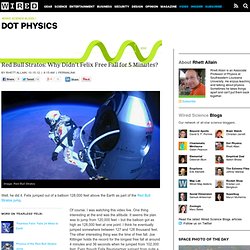
Perpetual Harvest Greenhouse System. General parameters of an Alcubierre Warp Drive in Higher Dimensional Spacetime Extrapolating success with Harold White - NASA research. Talk Polywell has some calculations of what might be achieved with the Harold White space warping work given plausible power generation and propulsion systems.
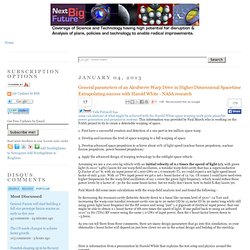
This information was provided by Paul March who is working on the NASA project to try to create a detectable warping of space. Red Bull Stratos Review - Helmet Camera - HD. Felix Baumgartner - 3D Headcam footage 128k ft space jump HD1080p. Sex at zero gravity. Jeudi, 14 Mars 2013 09:03 News European Space Agency testing facilities.

Credit: Université de Montréal University of Montreal researchers found that changes in gravity affect the reproductive process in plants. NASA Wants to Design a Holodeck. Galactic-Scale Energy. Since the beginning of the Industrial Revolution, we have seen an impressive and sustained growth in the scale of energy consumption by human civilization. Plotting data from the Energy Information Agency on U.S. energy use since 1650 ( 1635-1945 , 1949-2009 , including wood, biomass, fossil fuels, hydro, nuclear, etc.) shows a remarkably steady growth trajectory, characterized by an annual growth rate of 2.9% (see figure). It is important to understand the future trajectory of energy growth because governments and organizations everywhere make assumptions based on the expectation that the growth trend will continue as it has for centuries—and a look at the figure suggests that this is a perfectly reasonable assumption.
New evidence that comets could have seeded life on Earth. (Phys.org) —It's among the most ancient of questions: What are the origins of life on Earth?
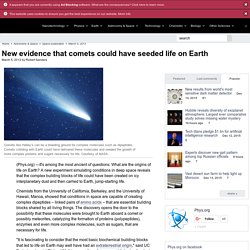
A new experiment simulating conditions in deep space reveals that the complex building blocks of life could have been created on icy interplanetary dust and then carried to Earth, jump-starting life. Chemists from the University of California, Berkeley, and the University of Hawaii, Manoa, showed that conditions in space are capable of creating complex dipeptides – linked pairs of amino acids – that are essential building blocks shared by all living things. The discovery opens the door to the possibility that these molecules were brought to Earth aboard a comet or possibly meteorites, catalyzing the formation of proteins (polypeptides), enzymes and even more complex molecules, such as sugars, that are necessary for life. Explore further: NASA funds instrument to probe life on Mars. Kepler. The Habitable Exoplanets Catalog - Planetary Habitability Laboratory. The figure above shows all planets near the habitable zone (darker green shade is the conservative habitable zone and the lighter green shade is the optimistic habitable zone).
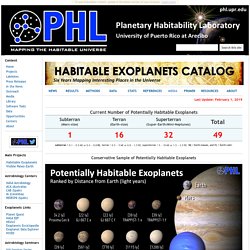
Only those planets less than 10 Earth masses or 2.5 Earth radii are labeled. The different limits of the habitable zone are described in Kopparapu et al. (2014). Finding Another Earth Within Reach. Kepler telescope's planet-hunting days crunch to a close - space - 15 May 2013. "Kepler was my North, my South, my East and West, my working week, no weekend rest, my noon, my midnight, my talks, my song; I thought Kepler would last forever: I was wrong.
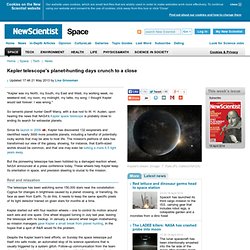
" So laments planet hunter Geoff Marcy, with a due nod to W. H. Auden, upon hearing the news that NASA's Kepler space telescope is probably close to ending its search for extrasolar planets. Since its launch in 2009. ISS Photo Locations. March 2013 Since the first mission to the International Space Station over 12 years ago there have been over a million photographs taken by astronauts looking out from four hundred kilometers above Earth.
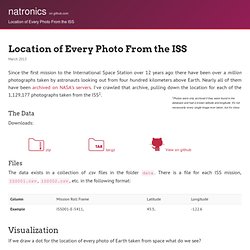
Nearly all of them have been archived on NASA’s servers. I’ve crawled that archive, pulling down the location for each of the 1,129,177 photographs taken from the ISS1. Lapse: Landsat Satellite Images of Climate Change, via Google Earth Engine. TIME and Space | By Jeffrey Kluger.

Space Station Astronauts Log One Million Photos. Space Station Astronauts Log One Million Photographs April 4, 2012 -- Two Russian spacecraft -- a Soyuz and Progress cargo ship -- hang above the Earth, docked to the International Space Station (ISS) while green wisps of auroral activity complete the scene.

Further Up Yonder. Mars colonization may require Earth soil. What are the qualifications to apply? Mars One will conduct a global search to find the best candidates for the first human mission to Mars.
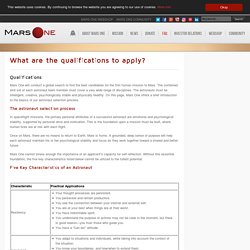
The combined skill set of each astronaut team member must cover a very wide range of disciplines. The astronauts must be intelligent, creative, psychologically stable and physically healthy. Meet the thousands of people ready to die on Mars. Aaron Hamm, an assistant hotel engineer who deals with HVAC, cooling systems, and maintenance, lacks the traditional qualifications to be an astronaut. But that doesn't mean he wants to stay on Earth. The Mars Underground (Full) Mars Science Laboratory.
Complete Mars Curiosity Descent - Full Quality Enhanced HD 1080p Landing + Heat Shield impact. NASA MSFC on USTREAM: . Science. At NASA's Marshall Space Flight Center in Huntsville, Ala., where the nation's journey to space began more than a half-century ago, a dedicated group of engineers, scientists and business professionals lead the development and testing of tomorrow's flagship space vehicles, space systems and rocket engines. We pursue cutting-edge scientific discoveries that improve and protect lives on Earth. And we work to discover the secrets of the universe, increasing our understanding of the cosmos and our place in it. Marshall became a NASA field center on July 1, 1960. Today, it remains a vital resource for NASA and the nation, with unique capabilities that are essential to the exploration of space. Together with our partners across NASA and around the world, we are engaged in a large part of the agency's work, especially propulsion and space transportation, engineering, science, space systems and space operations, and project and program management.
Mars impact: The red planet may get hit by a comet in October 2014. Image credit: Mars: NASA/JPL/MSSS; Comet Halley: Hale Observatory; composite: Phil Plait. Why Mars Died, and Earth Lived. Mars colonization package and hydroponic indoor vertical farming agriculture. Canadian Agricultural Consultant Dr. Nathan Owen-Going to Speak at Dallas Convention - The Mars Society. Dr. Mars ISRU for food crops and consumables. Building an Aquaponic System. To build this system you will need to construct two grow beds, two fish-food growing tanks, a fish tank, as well as a stand to elevate the fish food tanks. DIY inline PH probe and temperature sensor holder. Aquaponics. Solar Powered Aquaponic System Grows Fish and Vegetables Anywhere. Aquaponics in JH China. Open Reefs Controllables - The Future of Aquarium Control. An Open Source Reef Controller and Monitor Giving You Peace of Mind Where Ever You Are. Internet of food: Arduino-based, urban aquaponics in Oakland.
Colonization of the Moon. 1986 artist concept. Private Firm Sets Sights on First Moon Base. NASA may not be going to the moon anytime soon, but private companies plan to do so, a study by space habitat developer Bigelow Aerospace shows. The study, commissioned by NASA, is intended as a supplemental roadmap for the U.S. government as it charts human space initiatives beyond the International Space Station, a permanently staffed research complex that orbits about 250 miles above Earth.
Private Spaceflight Companies Eye Moon Bases. Human exploration of deep space is looking more and more like a tag-team affair, with NASA jetting off to asteroids and Mars while the private sector sets up shop on the moon. NASA's big decision: Build a moon base or lasso an asteroid? Bigelow Aerospace to Study Moon Base in Deal With NASA. Clavius Moon Base - debunking the moon hoax.